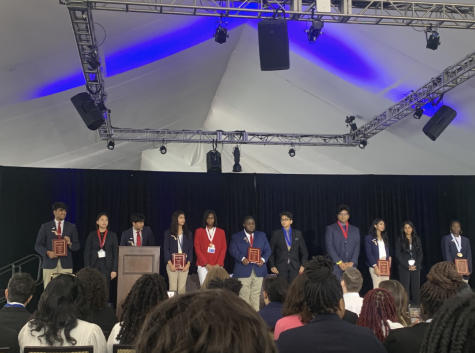DRESS CODE UPROAR: THE REVOLT OF THE RULES
October 9, 2015
Dress code is a policy all schools in Seminole County (and all over the United States) have established. It was created to keep students dressed modestly while in a learning environment. Some of the common ‘do not wears’ include but are not limited to: spaghetti straps or tank tops, sagging or baggy pants, and overall immodest attire. But now students feel that dress code is over-sexualizing female students.
Even though there are rules that apply to male students, most of the dress code regulations can solely apply to females. In the Seminole County Student Appearance and Dress Code under the ‘Upper Garment’ section, most banned clothing can only apply to female students (i.e. halter tops, tube tops, backless dresses/tops, spaghetti straps, and tank tops. Cut off necklines must be modest, and shirts must touch the top portion of lower garments at all times). The only aspect that could apply to male students under the ‘Upper Garment’ section is: “Garments that are distracting or inappropriate are prohibited, including but not limited to … printed profanity, or language, symbols, styles that promote the use of alcohol, drugs, tobacco products, gang-related or other illegal activities.” It is being said by students and others on social media that causing a female student to leave school, or change her clothes because it is a distraction to male students, is putting a male student’s education before the female’s.
Sophomore Rosie Water comments, “I often get dress coded for things that aren’t that big of a deal. I’m 5’10 so everything is generally smaller on me. When a male teacher dress codes me it makes me feel like they are looking at me wrong. I was dress coded once for a shirt without sleeves, and to me that is not a big deal. I shouldn’t have to change my entire look just because my shoulders are out.”
Many female students have openly complained about the harsh dress code. Parents and students often use social media to voice their opinion about dress code via Facebook, Instagram, Twitter, and by creating blogs or petitions.
If a male student were to be walking down the hallway with his pants sagging and his boxers showing, he probably only would get a warning such as ‘pull up those pants’. However, if a female were to be wearing shorts and a tank top, she would be asked to either put on a jacket or leave school entirely with a phone call home to her parent or guardian explaining the situation.
Junior Julian Ibagon says, “ Dress code is pointless to me. They say they are preparing us for life and trying to treat us like adults, but we can’t make the decision on what we want to wear. Dress code is extremely gender biased. It’s funny to me how society tells us not to objectify women, but we stimulate them on what is and is not appropriate for them to do. I have never been dress coded, even when my khakis were short. No one said anything to me.”
Although it may seem to be pointless in the eyes of the students, there is a reason behind dress code. Everything has its limits, including what is appropriate to wear to school. Every school in Seminole County and all over the United States is required to have some form of dress code.
Principal Dr. Connie Collins says, “The dress code was established by our School Board as a standard of appropriate attire for schools across our county. Like every workplace, schools have expectations regarding attire. The most important aspect of the code, in my opinion, is that it provides a guideline of what is reasonable and appropriate [to] wear on a school campus. For me, that means that undergarments should not be seen and clothing that is immodest or distracting should not be worn. We count on professionals to look and behave professionally. Although students are not professionals, students are certainly in their ‘workplace’ and in process of preparing for important roles. I think that it’s a good practice to dress appropriately for where we are. I wouldn’t wear a suit to the beach, and I wouldn’t expect to wear swimwear to school.”
To read the rest of the interview with Dr. Collins about dress code, visit:
https://docs.google.com/document/d/1wm395zaX08q9ePfhOY6kGmW8ykBM6ZpgEubVQgaHEL0/edit?usp=sharing


































